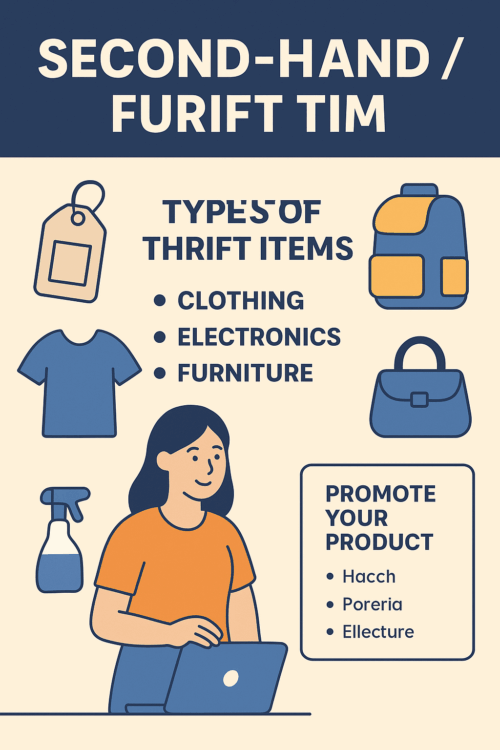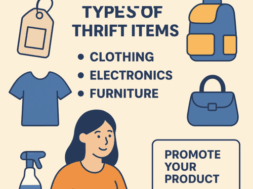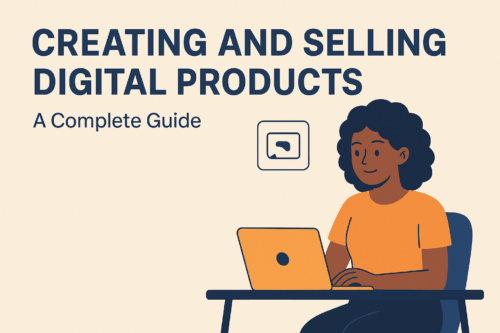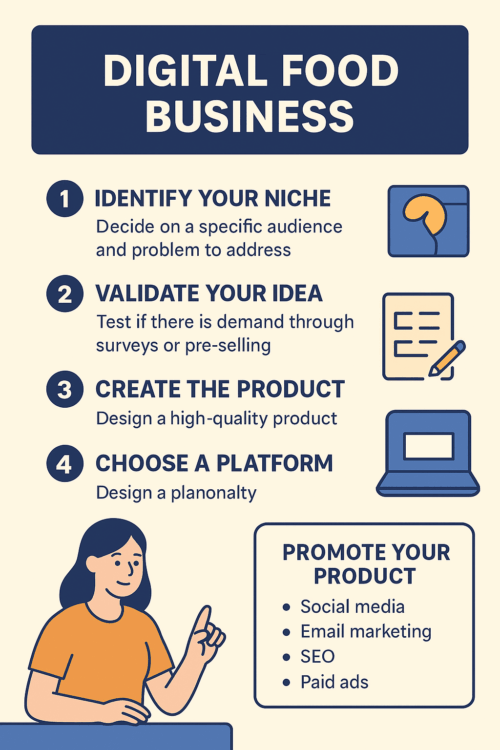Second-Hand/Thrift Selling: A Complete Guide to Building a Profitable Resale Business in 2025

The second-hand and thrift business has become one of the fastest-growing sectors in the retail and e-commerce industries. With more consumers embracing sustainable shopping habits, thrift stores, online resale platforms, and community marketplaces are booming. At its core, thrift selling involves reselling used items—from clothing and electronics to furniture and collectibles—giving them a second life in the circular economy.
As sustainability and affordability take center stage, thrift selling is no longer just a niche market; it’s becoming a mainstream trend shaping how people shop in 2025.
Why Thrift Selling is Growing in Popularity
Affordability and Accessibility
Shoppers can buy branded and quality items at a fraction of retail prices, making thrift stores especially appealing to students, young professionals, and families on a budget.
Sustainability and Eco-Conscious Living
The push against fast fashion and overconsumption has made second-hand shopping an eco-friendly alternative. Consumers now see thrift buying as a way to reduce waste and support the environment.
Gen Z and Millennials Driving Demand
Younger generations are embracing thrift as part of minimalist and sustainable lifestyles. Platforms like Depop and Poshmark have gained popularity by targeting Gen Z shoppers who value unique fashion finds and affordable style.
Types of Products Commonly Sold Second-Hand
Clothing & Accessories
- Vintage pieces, branded fashion, shoes, handbags, and jewelry are among the top-selling thrift items.
Electronics & Gadgets
- Used smartphones, laptops, cameras, and gaming consoles are highly sought-after due to rising prices of new gadgets.
Furniture & Home Decor
- Tables, chairs, storage units, and vintage decor are favorites for those looking to furnish homes affordably.
Other Popular Items
- Books, toys, collectibles, and sports gear continue to attract niche buyers.
Best Platforms to Sell Second-Hand Items
Global Platforms
- eBay, Poshmark, Depop, and Facebook Marketplace are popular worldwide for resale.
Regional & Local Options
- Platforms like Jiji, OLX, and local thrift shops cater to community-level buyers.
Niche Platforms
- Fashion lovers use Vinted and Grailed, while tech resale platforms focus on used electronics.
How to Price Second-Hand Items Effectively
Setting the right price is crucial for success in thrift selling.
- Condition Rating: New, gently used, or worn heavily—condition impacts price.
- Brand & Popularity: Items from premium brands or rare vintage pieces often command higher prices.
- Market Value Research: Use online platforms to compare listings before setting your price.
- Balance Profitability & Affordability: Overpricing drives buyers away, while underpricing cuts into margins.
Marketing Strategies for Thrift Sellers
Social Media Presence
Platforms like Instagram, TikTok, and Pinterest are perfect for showcasing thrift finds. Use trending hashtags like #ThriftStoreFinds or #SustainableFashion to reach a broader audience.
Influencer & Community Marketing
Collaborating with influencers in the sustainability and fashion space can give your business credibility and reach.
Storytelling & Branding
Highlight the sustainable and eco-friendly angle of your products. Share stories about vintage finds or eco-conscious shopping to connect emotionally with customers.
Challenges in Thrift and Second-Hand Selling
- Counterfeit Products: Authenticity checks are vital to avoid damaging customer trust.
- Quality Control: Not all second-hand items are resellable—screen inventory carefully.
- Customer Trust: Transparency in descriptions and images helps build buyer confidence.
- Logistics & Delivery: Shipping bulky items like furniture remains a challenge for many sellers.
Trends in Second-Hand Selling (2025 and Beyond)
Technology-Driven Resale
- AI-powered resale apps and mobile platforms make it easier to match buyers with items at the right price.
- Virtual try-ons and AR shopping may soon redefine the thrift experience.
Sustainability Trends
- Eco-conscious consumers prefer sellers using biodegradable packaging and promoting recycling initiatives.
Circular Fashion Economy
- Major brands are partnering with resale platforms for buy-back programs to extend the life of their products.
FAQs About Thrift and Second-Hand Selling
1. What is thrift selling?
Thrift selling is the resale of pre-owned items such as clothing, electronics, furniture, and collectibles. These items are sold through thrift stores, online platforms, or community markets at affordable prices.
2. Is thrift selling profitable?
Yes. With proper sourcing, pricing, and marketing strategies, thrift selling can become a highly profitable business. Niche products like vintage clothing and electronics often yield high resale margins.
3. How do I start a thrift business with little money?
- Begin by reselling unused items from your home.
- Use free platforms like Facebook Marketplace to avoid upfront costs.
- Reinvent your brand identity around sustainability to attract eco-conscious buyers.
4. What products sell best second-hand?
- Fashion: Branded apparel, handbags, shoes, and vintage clothing.
- Electronics: Phones, laptops, and gaming consoles.
- Home Decor: Furniture, storage items, and unique pieces.
Pro Tips for Thriving in Thrift Selling
1. Source Smartly
Check estate sales, clearance events, and local thrift shops for undervalued items you can resell at higher margins.
2. Build an Online Brand
Consistency in your product photos, pricing, and descriptions builds customer trust and loyalty.
3. Focus on Storytelling
When reselling vintage or unique items, highlight the history or uniqueness of the product—it adds emotional value.
4. Offer Excellent Customer Service
Respond to inquiries quickly, provide accurate descriptions, and ensure timely deliveries. Trust equals repeat sales.
5. Use Data and Analytics
Track which products sell best on which platforms. This helps you refine your inventory and marketing strategies.
Step-by-Step: How to Start a Thrift Business in 2025
- Research the Market – Identify trending items and study demand in your region.
- Source Inventory – Start with your own closet, then branch into wholesale second-hand suppliers.
- Choose a Platform – List items on eBay, Depop, Poshmark, Jiji, or Facebook Marketplace depending on your target audience.
- Create High-Quality Listings – Use clear photos, detailed descriptions, and honest condition ratings.
- Market Your Business – Promote on Instagram, TikTok, and even YouTube to showcase your thrift finds.
- Deliver Excellent Service – Ensure items are cleaned, packaged sustainably, and delivered on time.
- Scale Your Business – Once you’re consistent, consider opening a physical thrift store or a dedicated e-commerce website.
Final Thoughts
The second-hand/thrift industry is more than a passing trend—it’s a profitable business opportunity with a sustainable mission. From eco-conscious Gen Z shoppers to bargain hunters and vintage lovers, the market continues to grow.
By embracing digital platforms, sustainable practices, and customer trust, you can successfully build a thrift-selling business that thrives in 2025 and beyond.
Conclusion: Building a Profitable Thrift or Second-Hand Business
Starting a thrift or second-hand selling business is more than just a way to make extra income—it’s an opportunity to tap into a growing sustainable economy. By focusing on affordability, transparency, and eco-friendly practices, entrepreneurs can build profitable businesses while supporting a greener future.
For resale entrepreneurs, small business owners, and sustainable shoppers, the second-hand market offers endless opportunities in 2025 and beyond.
















